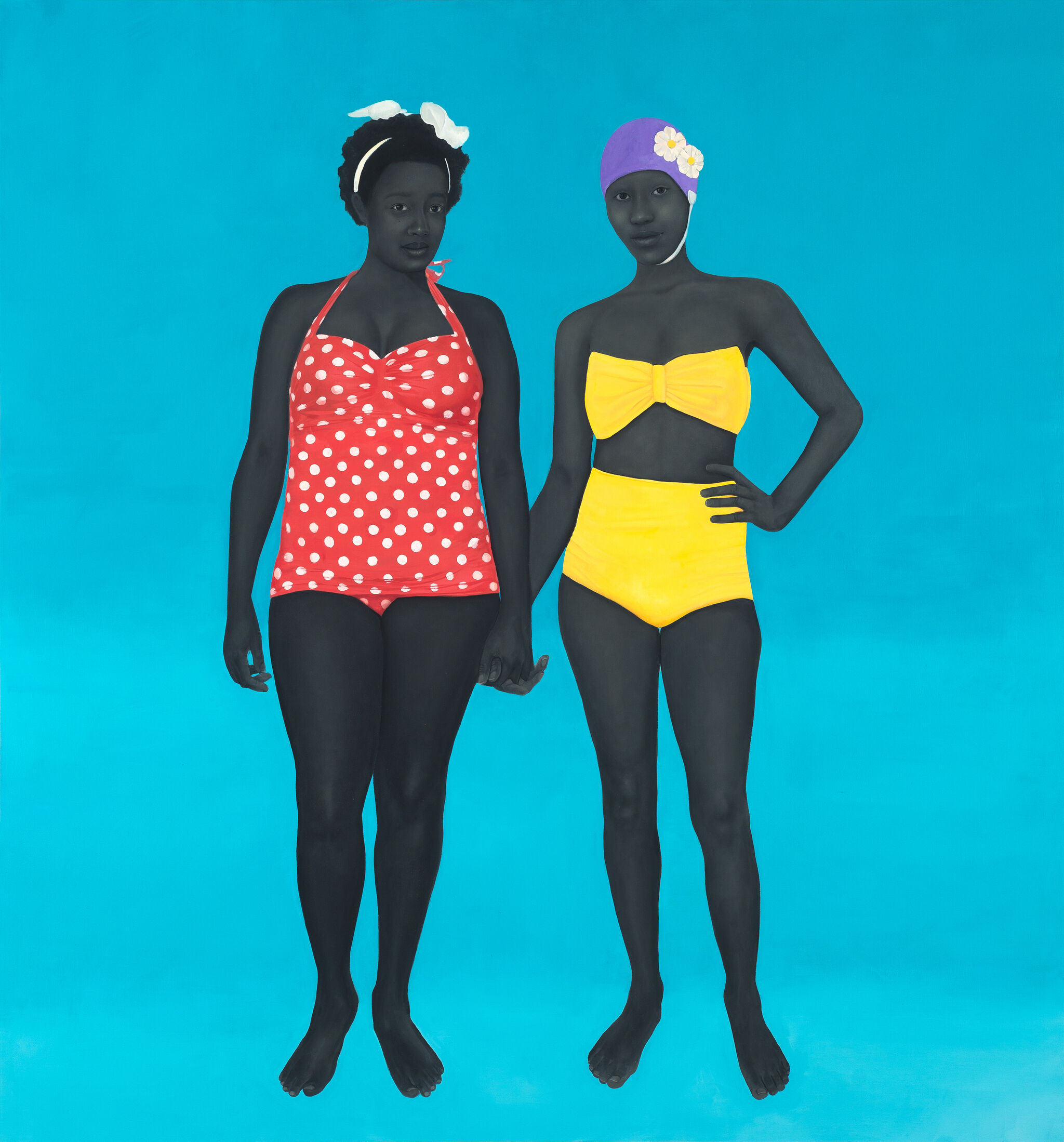Amy Sherald: American Sublime | Art & Artists
Apr 9–Aug 10, 2025
Amy Sherald: American Sublime | Art & Artists
2
The split between a person’s inner life and the face they show to the world is a recurring theme throughout Sherald’s work. For some people, this separation might be an intentional choice made to express different aspects of their identities through clothes, attitude, or body language. For others, it might be an involuntary or self- protective response to cope with the biases or assumptions of others. Sherald strives to mend this split with her work, for others and for herself, by presenting figures who are liberated from the performance of race, gender, religion, or other preconceived identity markers; as she has said, “it is about letting go of looking at people looking at me.”
Sherald often uses quotes from literature as titles, as with Listen, you a wonder. You a city of a woman. You got a geography of your own (from Lucille Clifton’s 1980 poem “what the mirror said”). She takes inspiration from a wide range of authors—including Jane Austen, Octavia E. Butler, Emily Dickinson, Zora Neale Hurston, and Toni Morrison—whose work concerns the liberation of people oppressed in body, mind, or spirit.
The Bathers, 2015
These two young women hold hands as they confidently eye the viewer. Their relationship to one another is ambiguous; they could be sisters, lovers, or friends. Bathers have served as popular subjects in Western art for hundreds of years, particularly in late nineteenth- and early twentieth-century European painting. Artists such as Paul Cézanne, Georges Seurat, and Pierre-Auguste Renoir often depicted white subjects relaxing near rivers and pools. Sherald’s vision instead situates Black women as autonomous actors in their own narrative of leisure, joy, and ease.

